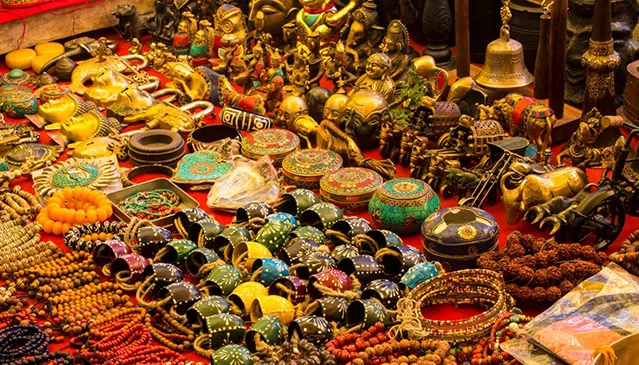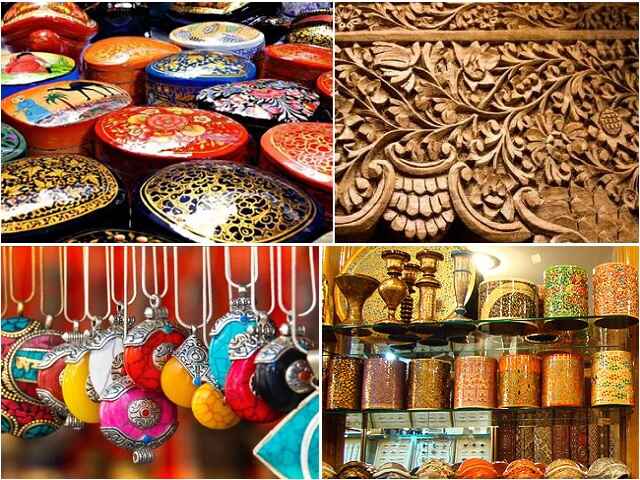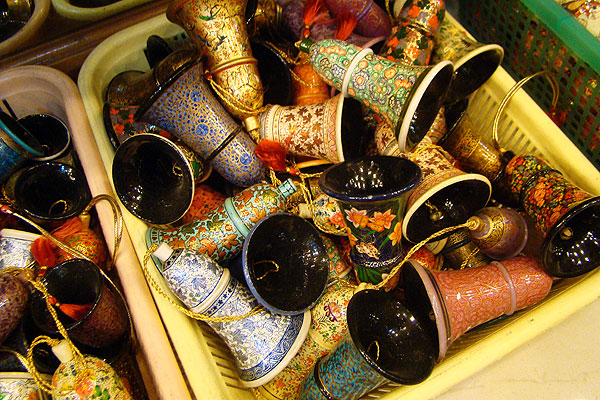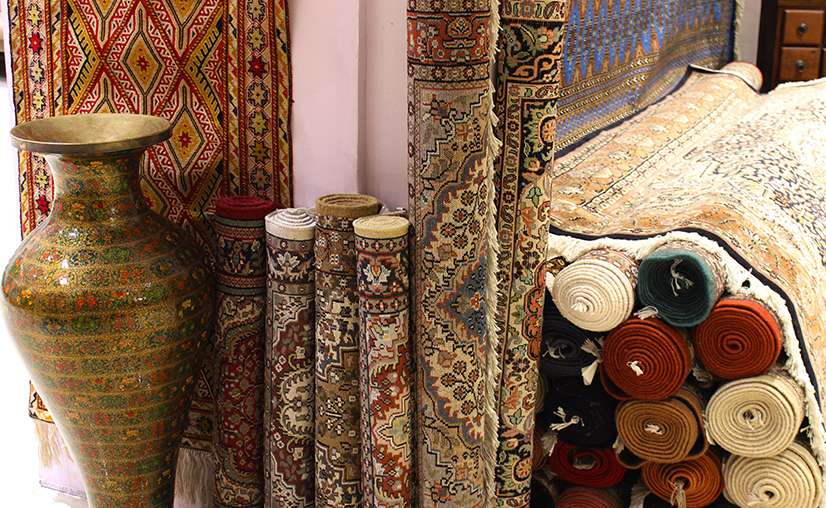Declining Demand: The Challenges Facing India’s Handicrafts Exports
November 30, 2024 | by gurjeetsaini@yahoo.com

India’s handicrafts sector, once a beacon of tradition and craftsmanship, has seen a worrying decline in exports for the fiscal year 2022-23. The export value of handicrafts fell by 20% year-on-year, signaling a troubling trend for an industry that has long been a significant contributor to the Indian economy. This downturn is not only the result of global economic challenges but also domestic issues that have dampened the spirit of the handicraft sector.
The Global Impact on Handicrafts
The foremost reason behind the decline in India’s handicraft exports is the turbulent global economy. The war in Ukraine and the ongoing global recession have severely affected consumer sentiment worldwide. According to Rajkumar Malhotra, Chairman of the Export Promotion Council of Handicrafts (EPCH), economic uncertainty has made consumers reluctant to purchase non-essential and luxury items like handcrafted goods. Handicrafts, often considered luxury or gift items, are typically the first to be sidelined during such times.
The impact of the Ukraine conflict is significant, as it has disrupted international trade and led to cautious purchasing. The war’s unpredictable duration and aftermath have further deepened this caution, leading to a decline in demand for non-urgent purchases like handmade crafts.
Additionally, the bureaucratic red tape in obtaining visas for international trade shows and market visits has further strained the export sector. Exporters are often left waiting for months—sometimes up to a year—to secure visas, hindering their ability to showcase and sell products in crucial markets like Europe and the United States.
Domestic Factors Affecting Handicrafts Exports
While global challenges have played a significant role, domestic factors have also contributed to the slump in exports. In 2022, the Indian government shifted the classification of wooden furniture from the EPCH category to that of Capexil. This change has caused a drop in the total handicrafts export numbers, as furniture, which had been a major handicraft export category, no longer falls under the same classification.
Moreover, the COVID-19 pandemic, which initially boosted online sales of handicrafts due to an increase in home decor demand, led to significant shipment delays. The shortage of containers caused delays in delivery, meaning many products didn’t reach international markets in time for peak seasons, such as festivals. As a result, the demand for these items dropped, exacerbating the decline in exports.
Bright Spots Amid the Decline
Despite the challenges, certain segments of the market are showing resilience. Handcrafted metalware and artisan furniture have seen rising demand in the Middle East, particularly in countries like the UAE, where such products are prized for their craftsmanship and cultural appeal. The announcement of Moradabad and Varanasi as “Towns of Export Excellence” offers hope for rejuvenating India’s handicraft clusters, with promises of financial support and enhanced infrastructure under government schemes.
Looking Ahead: Steps to Revive the Sector
The path forward for India’s handicrafts sector requires timely and strategic interventions, both at the policy and industry level. Some key recommendations to revive exports include:
- Labour Law Reforms: India’s existing labour laws could be more flexible, allowing artisans to work in time-bound shifts to meet production targets. This would make the industry more responsive to market demands and help boost productivity.
- Simplifying GST Processes: The current GST filing processes can be burdensome for small-scale manufacturers. Simplifying these processes would help ease their participation in international trade and encourage more artisans to export their products.
- Faster Visa Processing: Swift visa processing for genuine buyers looking to visit India for sourcing handicrafts would facilitate smoother business transactions and trade relationships.
- E-Commerce as a Growth Catalyst: E-commerce presents a huge opportunity for India’s handicraft sector. With projections suggesting the sector could reach an export value of $200-$300 billion by 2030, facilitating the entry of small-scale exporters into e-commerce platforms could significantly increase global exposure for their products. The recent increase in export limits for courier-based shipments through the Foreign Trade Policy (FTP) 2023 could further help small manufacturers reach international markets with ease.
Conclusion
India’s handicraft sector is facing a challenging period, but with the right interventions and policies, it can bounce back. By addressing global economic issues, streamlining domestic processes, and capitalizing on digital platforms, India’s handicrafts can once again thrive on the world stage. The industry holds immense potential, not only for preserving India’s rich cultural heritage but also for ensuring sustainable employment for millions of artisans across the country.
export performance of various Indian handicraft items over the last three fiscal years. Here’s a breakdown of the export values for some key handicraft categories:
- Artmetal Wares: There was a decline in exports from $556.92 million in 2021-22 to $466.35 million in 2022-23, showing a negative trend.
- Woodwares: Exports also decreased from $1,217.89 million in 2021-22 to $953.43 million in 2022-23.
- Handprinted Textiles & Scarves: A decrease in exports from $414.41 million in 2021-22 to $349.65 million in 2022-23.
- Embroidered & Crocheted Goods: Exports fell from $716.28 million in 2021-22 to $528.67 million in 2022-23.
- Shawls as Artwear: Marginal growth from $0.70 million in 2021-22 to $0.77 million in 2022-23.
- Zari & Zari Goods: Exports declined from $9.31 million in 2021-22 to $7.32 million in 2022-23.
- Imitation Jewellery: A decrease from $206.41 million in 2021-22 to $180.28 million in 2022-23.
- Agarbattis & Attars: Exports decreased slightly from $191.44 million in 2021-22 to $158.85 million in 2022-23.
- Miscellaneous Handicrafts: Exports declined from $1,146.40 million in 2021-22 to $938.22 million in 2022-23.
Overall, the total export value for Indian handicrafts dropped from $4.46 billion in 2021-22 to $3.58 billion in 2022-23.
This drop in handicraft exports is attributed to global factors such as the ongoing geopolitical issues (e.g., the Russia-Ukraine war) and domestic challenges, including changes in product classifications and logistics problems during the COVID-19 pandemic.
Export Trends Overview (2020-23)
Artmetal Wares:
- Exports for artmetal wares have shown a steady increase from $450.52 million in 2020-21 to $556.92 million in 2021-22, but there has been a noticeable dip to $466.35 million in 2022-23. This decrease likely reflects broader market challenges such as global economic slowdowns and shifting consumer priorities during the pandemic aftermath.
Woodwares:
- Woodwares saw substantial growth, reaching $1.22 billion in 2021-22 from $892 million in 2020-21. However, it experienced a decline to $953.43 million in 2022-23, indicating a trend of reduced demand, possibly impacted by domestic regulatory changes or weaker international demand in the last year.
Handprinted Textile & Scarves:
- There was a decline in exports of handprinted textiles and scarves, dropping from $414.41 million in 2021-22 to $349.65 million in 2022-23. This might be due to increasing competition in global textile markets and changing consumer preferences.
Embroidery & Crocheted Goods:
- Exports in this category decreased from $716.28 million in 2021-22 to $528.67 million in 2022-23, indicating weaker global demand for embroidered and crocheted items, potentially due to global economic uncertainty.
Miscellaneous Handicrafts:
- This category, which includes various handicraft items, showed a notable decline, dropping from $1.15 billion in 2021-22 to $938.22 million in 2022-23. While the category is broad, the decline is in line with overall export challenges in the sector.
Key Insights from the Graph
- Woodwares maintained its dominance over the years, representing the largest share of handicraft exports despite a decline in 2022-23.
- Embroidery and crocheted goods, along with miscellaneous handicrafts, consistently showed higher exports in 2021-22 but faced a downturn in 2022-23.
- Artmetal wares saw the smallest drop in exports, but it still experienced a decline in the most recent year, indicating potential resilience in the sector despite global challenges.
Challenges Impacting Export Decline
Several factors contributed to the overall decline in handicraft exports, including:
- Global Economic Slowdown: The war in Ukraine, the looming global recession, and reduced consumer spending on non-essential items have all dampened demand for luxury goods such as handcrafted items.
- Shipping and Supply Chain Disruptions: Issues like the container shortage during the pandemic caused delays, which further hurt the timing of seasonal sales.
- Domestic Policy Changes: Changes in classification, such as the shift of wooden furniture from the handicraft sector to another export body, contributed to the decline in the overall export figure.
Revival Strategy
To address these challenges, several measures can help rejuvenate the sector:
- Flexibility in labor laws for the timely production of artisanal products.
- E-commerce expansion to tap into growing digital markets.
- Streamlined export processes including faster visa and GST processes for small manufacturers.
With these adjustments, the handicrafts sector could experience a revival as global markets open up and demand for unique, handmade items rebounds post-recession.
RELATED POSTS
View all



